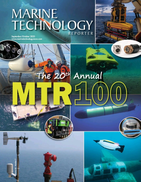Marine Technology Reporter Blogs - wax
Deepwater Flow Assurance – Part 2

Deepwater flow assurance should always be considered from an integrated standpoint, taking into account the well, reservoir, and production angles to make sure the full range of fluid scenarios and compositions are examined, and to avoid costly resampling and re-evaluation after systems are built. Production fluids interact with the reservoir, well, pipeline, surface facilities, and the environment. All these impact flow assurance, leading to potential issues with hydrates, wax, asphaltenes, scales, slugging, emulsion, foam, sand, and corrosion. Deepwater flow assurance requires a full understanding of these interactions and a multi-disciplinary approach to managing them. Modern simulation software allows such an approach to be integrated efficiently into asset team workflows.
Deepwater Flow Assurance – Part 1

Flow assurance is a relatively new term in oil and gas industry. It refers to ensuring successful and economical flow of hydrocarbons from reservoir to the point of sale and is closely linked to multiphase flow technology. Flow Assurance developed because traditional approaches were inappropriate for deepwater production due to extreme distances, depths, temperatures or economic constraints. The term “Flow Assurance” was first used by Petrobras in the early 1990s (Garantia do Escoamento in Portuguese), meaning literally Guarantee of Flow, or Flow Assurance. Flow assurance is an extremely diverse subject, encompassing many specialized engineering disciplines.
Subsea Flow Assurance and Pipeline Pigging

Pipeline pigging is actually a form of flow assurance for O&G pipelines and flowlines. This is because the use of pipeline pigging helps maintain subsea pipelines clear of unwanted material or debris that may build up in a pipeline and eventually cause the passage of O&G to slow or even stop altogether if the pipeline is plugged with these materials. This unwanted debris, such as wax and paraffin, when obstructing a pipeline's flow, may cause the subsea pipelines to crack, by increasing the pressure in the pipeline. A highly clogged pipeline section may also cause damage to other sections of the same pipeline, due to pressure increase along the line caused by the decrease in flow along the clogged pipeline section.



 August 2025
August 2025



